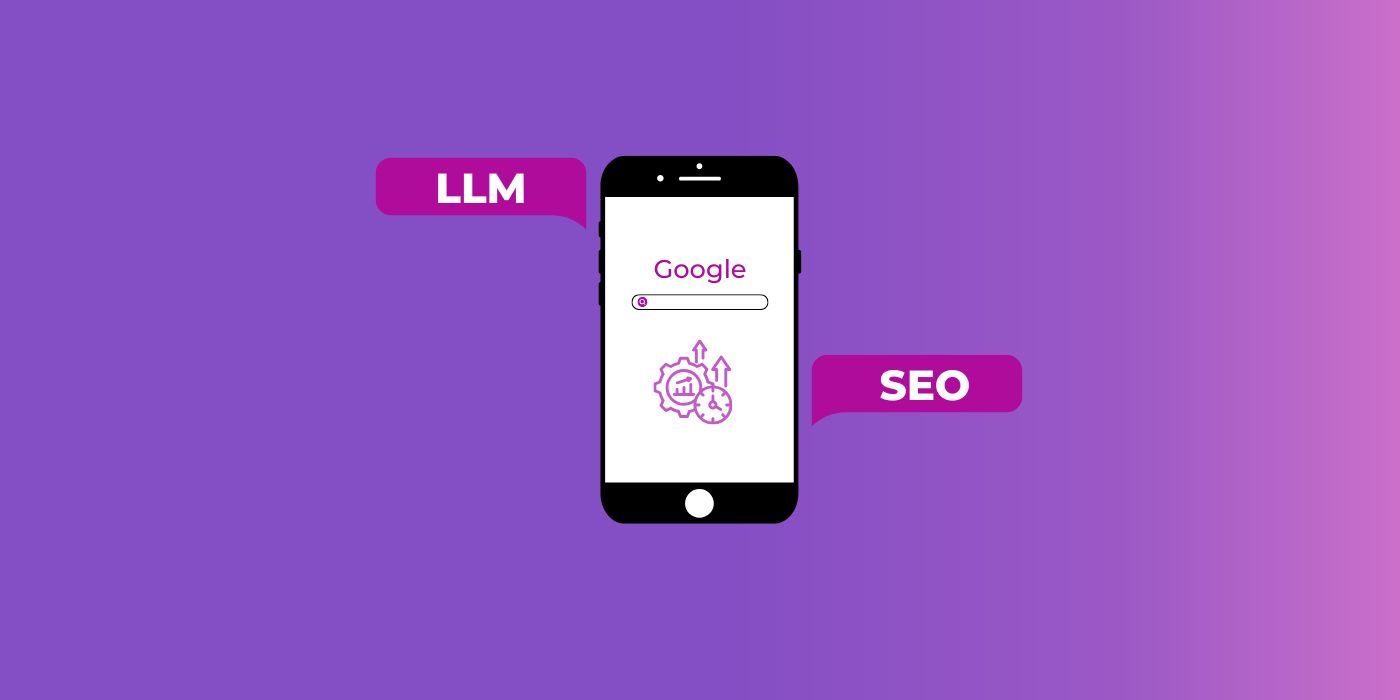20 Essential Marketing Tips for Success: A Comprehensive Guide

Top Marketing Strategy Tips for Large and Small Businesses
In 2025, these marketing tips remain relevant for both large and small businesses.
- Identify your target audience
- Develop a unique brand identity
- Maintain consistent branding
- Leverage social media platforms
- Create engaging social media content
- Utilize social media advertising
- Produce high-quality content
- Plan a content calendar
- Build and segment your email list
- Craft compelling email campaigns
- Optimize for search engines (SEO)
- Improve page speed
- Enhance user experience (UX)
- Utilize pay-per-click (PPC) advertising
- Implement influencer marketing
- Track key marketing metrics
- Optimize for local SEO
- Leverage free marketing tools
- Engage with your community
- Get creative with marketing tactics
Don’t worry – we’ll discuss each marketing strategy in detail. Plus, we’ll recommend digital marketing tools you can use for each segment.
1. Identify Your Target Audience
Marketing won’t exist without your audience. They’re the reason why you run these marketing campaigns. After all, they are your potential customers.
Digital marketing is an at all-time high today. You’re reaching out to more than 5 billion social media users. That’s not counting the 80 billion search queries that Google generates monthly.
On the surface, it looks easy to reach your target audience. But how can you target potential customers with high purchase intent? Which digital channel offers more realistic avenues to acquire new customers?
These tips could increase your chances of reaching high-value target audience:
- Market research: Analyze trending topics and competitors in your market. This gives you a deeper understanding of both potential and existing customers. Google Trends is an excellent tool for discovering trending topics.
- Buyer personas: Create fictional customer personas for your business website. Include details like location, interests, occupation, and age. You can also use Customer Relationship Management (CRM) tools like Salesforce CRM. These tools collect useful customer data such as browsing patterns and behavior.
- Direct feedback: Don’t hesitate to request feedback through surveys and polls. This is a highly recommended small business marketing strategy. Use survey tools like SurveyMonkey or Typeform.
Targeting the right audience is also key in lead generation. Generating high-quality leads requires understanding the right audience for your brand.
Continuously analyze your audience’s interests and needs. These elements are the priority of your digital strategy.
2. Develop a Unique Brand Identity
What does your audience say when they talk about your products? How do they compare yours with those of your competitors?
As much as possible, you want your brand to be as unique as it gets. Your digital marketing strategy relies heavily on your branding. When done right, you almost always get free word-of-mouth marketing.
Aim for these characteristics when developing a unique brand identity:
- Permanence: Aim for an identity that people will easily remember. Experiment with different logos and taglines. Show them to your friends or to people within the industry. They’ll choose a specific logo or tagline that sticks to people’s memories.
- Consistency: Branding should be visually content across multiple platforms. This includes your logo, tagline, and messaging prompts. Create a brand style guide for an internal or external marketing team.
- Goal alignment: Align your branding to your company values. These two elements become your guide for future marketing ventures. Plus, you get to plan your digital marketing strategies more easily this way.
You can use digital tools to make this branding process easier. Use Adobe products like Illustrator or Photoshop for visual designs.
3. Maintain Consistent Branding
We mentioned the importance of brand identity for your digital marketing strategy. Now, how can you maintain consistent branding across all platforms?
A 2024 survey found out that 42% of retailers find omnichannel strategy as very important. You can’t rely on traditional strategies anymore. Every business should also implement digital marketing strategies.
However, this requires following a consistent branding playbook. You want people to recognize your branding right away. That’s essential whether you’re a large-scale or small business owner.
We recommend these tips for centralizing your branding efforts:
- Document your brand guidelines. Create a portfolio that includes visuals, messaging, tone, and customer personas. Distribute these guidelines to all departments.
- Monitor brand mentions across all platforms. Use tools like Mention or Brandwatch to automate brand monitoring.
- Incentivize your employees to become brand ambassadors. This encourages them to share your marketing materials. Just ensure that they apply the company’s branding guidelines.
Also, we suggest running regular branding audits. This guarantees your unique presence across multiple platforms.
4. Leverage Social Media Platforms
Social media is essential to boost your digital presence. It’s almost required these days. Otherwise, you’re missing out on many marketing opportunities.
However, social media marketing isn’t an overnight sensation. Unless you go viral, that is. It’s a long-term effort that requires timeliness and consistency.
Here are steps in leveraging social media channels to your advantage:
- First, identify the platform where your audience is most visible. Experiment with posting similar content across multiple channels. Then, find out which platform offers the most reach and engagement.
- Second, create content that fits the nature of each platform. For example, X and TikTok are two completely different channels. TikTok’s audience is more interested in short-form video content. On the other hand, witty or informational texts are suited for X.
- Next, build relationships through constant engagement. Respond genuinely in the comment section. Reply promptly to any direct messages. This increases brand trust, which is essential in social media marketing.
Most of your social media strategy is about establishing customer relationships. Use analytics tools like Hootsuite to discover avenues for optimizing your social playbook.

5. Create Engaging Social Media Content
Content is king in digital marketing. It even takes a higher level of importance on social channels.
There’s just no way around it. Your content can make or break your marketing campaign. It opens up opportunities for customer interactions.
Apply these content marketing tips on your social media accounts:
- Trending formats: Short-form videos are dominating digital marketing. These reels are easier to consume and don’t require longer attention. Utilize free versions of video editing tools like InShot and CapCut.
- Varied purposes: Don’t just post content for entertainment purposes. Try to experiment with educational and promotional content. This allows you to cater to different types of audiences.
- User-generated content (UGC): Encourage people to create and share content. Host giveaways that require users to tag you in their photos and videos.
We can’t stress consistency enough. Be consistent in engaging with your online community. You’ll absolutely reap the rewards in heaps.
6. Utilize Social Media Advertising
Advertising on a social media platform is a gold mine these days. In fact, it’s the second biggest market within digital advertising. Its revenue is expected to reach $255 billion by 2028.
Most social channels have built-in platforms for paid ads. But how can you maximize your ad spending?
Accurate targeting is the priority in paid advertising. Follow these tips to increase your ROI on social ads:
- Demographics: The pre-requisite is a deep understanding of your audience. This helps you target demographic details more accurately. Analyze your target customer persona and data.
- A/B testing: Experiment with different versions of an ad copy. Vary your CTAs, headlines, and visuals. See which version collects the most engagement.
- Performance monitoring: Track the performance of your social ads. This way, you know which areas you need to optimize. Every social channel has its own analytics tools. You can also use third-party monitoring tools like Sprout Social.
Also, take note of social media posts that garner high organic reach. Use these types of content on your ads. You could reach more people with a proven content format.
7. Produce High-Quality Content
What’s the best way to encourage user engagements? The answer is high-quality, relevant content, of course.
Valuable content means addressing your audience’s pain points. It also means following these proven strategies:
- Content repurposing: Repurpose your older content into new formats. Break down long-form content into scripts for short reels. This can maximize the value of your entire content library.
- Content relevance: Check outdated information on your existing content. Update facts, statistics, and other essential information if necessary.
Moreover, invest in upskilling your creative team through workshops and seminars. Most importantly, they should be provided with adequate equipment and resources. Your team is the key to producing high-quality content.
8. Plan a Content Calendar
For a small business, your content is a gateway of opportunities. It’s how you can penetrate a market that’s already brimming with competitors. As a startup, how can you keep up with a demanding flow of content?
A well-managed content calendar is your solution. In fact, it’s one of the best marketing tips for small business workflows.
How can you maximize a content calendar? Here are our recommended tips:
- Always plan ahead. Schedule content in advance to ensure regular posting. Take advantage of seasonal occasions or holidays to spice up your content.
- Leverage current trends in your content marketing strategy. Monitor news and happenings in your industry. AnswerThePublic is a great tool for tracking trending keywords.
- Use digital content calendars to centralize your scheduling efforts. Social channels have built-in scheduling tools. Alternatively, you can use third-party tools like Monday.com.
You should also have specific content for each stage of the customer journey. For example, educational content is best for capturing awareness or attention. Then, consider offering product guides during the decision stage of the buyer’s journey.
9. Build and Segment Your Email List
Email marketing is still a relevant strategy these days. In fact, 81% of companies still use email in their online marketing campaigns.
The challenge is how to target the right people in your email rollouts. That’s a priority, whether you’re an enterprise or a small business.
The key is to segment your email list. Here are steps on how to do it:
- Lead magnets: Email marketing campaigns start with lead magnets. These are free perks you offer to encourage people to sign up. Examples include free ebooks, whitepapers, templates, coupons, and other valuable resources.
- Segmentation: Categorize your audience into particular segments. These segments could be based on their interests, behavior, and demographics. Mailchimp is a powerful email list segmentation tool.
- Personalized content: Customize your content according to each segment. Create unique headlines and messages to boost click-through rates and engagement.
Email marketing isn’t just for enterprises targeting high-value clients. A small business can also rely on emails to broaden its customer base.
10. Craft Compelling Email Campaigns
What comes next after segmenting your email lists? You then focus on creating content that leads to engagements.
Nowadays, there are many creative strategies for creating email content. Plus, there are digital tools that help you craft interactive elements. Here are aspects that you need to be more creative at:
- Write subject lines that uniquely address each email segment. People receive so many promotional emails in one day. You need to stand out with a unique, client-specific subject line.
- Add interactive elements like videos, quizzes, and polls. Email platforms like ConvertKit and Campaign Monitor also support GIF insertions.
- Test different variations of your email campaigns. Make particular changes to your audience segmentation, subject lines, CTAs, and interactive elements.
Don’t forget to monitor your email campaign’s performance. Platforms like Mailchimp and Constant Contact provide analytics features for performance monitoring.
11. Optimize for Search Engines (SEO)
Search engine optimization (SEO) doesn’t just boost your presence on Google. SEO also increases brand trust and authority.
More than 60% of SEO professionals are satisfied with their results. This means that SEO still works wonders in online marketing.
So, how can you increase your search engine visibility? We recommend these fundamental strategies:
- Keyword research: Find relevant keywords that are trending in your niche. These keywords capture the current interests and needs of your audience. Try free limited versions of keyword research tools like Ahrefs and Semrush.
- Content marketing: Boost your SEO with content optimization. Follow Google’s guidelines in creating helpful content.
- On-page SEO: Meta tags like titles and descriptions are essential in SEO. Search engine crawlers use meta tags to index your website. Optimize meta tags through SEO plugins like Yoast SEO and Rank Math.
A strong backlink profile can also enhance your online marketing efforts. But it’s important not to engage in spammy or illegal link-building. Always adhere to Google’s spam policies when building links.
12. Improve Page Speed
Page speed is one of the ranking factors on search engines. Your website should have these average loading times:
- Desktop: Less than 3 seconds
- Mobile: Less than 8 seconds
Otherwise, you’ll miss out on engagement and conversion opportunities. You’ll turn away both your visitors and the search engine crawlers.
Of course, there are things you can do to improve page speed. Here are our recommendations:
- First, you need to identify which areas need optimization. Google PageSpeed Insights offers information on what’s causing delays in your loading time.
- You can compress your images to reduce loading time. TinyPNG is an image compression tool that doesn’t affect photo quality.
- Minify website codes by removing unnecessary characters. Reduce file sizes in your CSS, JavaScript, and HTML codes. If you’re using WordPress, go for plugins like WP Rocket.
Also, try testing your website on different devices. Prioritize responsiveness on mobile devices. Surely, a significant number of your audience base are mobile users.

13. Enhance User Experience (UX)
User experience is essential in establishing a strong online presence. Visitors should be able to navigate through your website easily and conveniently.
A user-friendly design is key for an enhanced UX. Here are the steps you should take to achieve this goal:
- Easy navigation: Every visual element in your website should be clear and readable. Also, your navigation architecture should be logical and intuitive. Check your internal linking structure to see how pages connect with each other.
- Mobile responsiveness: Mobile platforms are the new digital marketing channels. Test your mobile responsiveness and speed through GTmetrix.
- Site usability: Chrome DevTools is useful for testing your website’s usability. You can simulate your website’s interface on different device types and sizes.
We also recommend gathering direct user feedback through surveys and polls. After all, they’re the ones who use your website on different devices.
14. Utilize Pay-Per-Click (PPC) Advertising
PPC ads have become a go-to marketing tactic for many businesses. Did you know that 90% of Internet users see ads on Google? We’re not even factoring in the reach you’ll get through social ads.
Investing in PPC ads will get you results. The question lies in how significant those results are. Follow these PPC strategies to maximize your investment:
- Targeted ads: Tie in your ads with your marketing goals. Is it your goal to expand to a new customer base? Or do you want more sign-ups for your email list?
- Retargeting: Reach people who previously engaged with your brand. You can add a remarketing tag on Google Ads. On Meta, you can tap into Lookalike Audiences.
- Performance monitoring: Continuously track your ad performance. You can track conversions through Google Analytics. Social channels also offer built-in tools for monitoring ad campaigns.
Your paid advertising spending depends on your marketing budget. If you’re a small business, you need to be wise in your ad campaigns. Otherwise, we still recommend crafting content for organic traffic.
15. Implement Influencer Marketing
In 2023, the influencer marketing value increased to $21 billion. Influencer marketing should be part of your digital marketing campaign.
Your brand takes center stage when working with influencers. That’s a blessing and a curse. If not done right, influencers could have a bad reputation.
Here’s how you can make influencer marketing work for you:
- Always collaborate with influencers in your niche. This way, you reach an audience that’s similar to yours.
- Create content that provides solutions to people’s pain points. This kind of content attracts more interest and engagement.
- Ensure that influencers adhere to your content and branding guidelines. Every content should be aligned to your company values. Otherwise, you’re risking brand reputation and trust.
16. Track Key Marketing Metrics
A selective approach is one of the best digital marketing tips. As a brand, it’s impossible to cover all marketing aspects. During a specific period, you target realistic goals that align with your company’s direction.
Having said that, you should monitor metrics that connect to your goals. We recommend these steps in tracking key marketing metrics:
- Identify the metrics that directly align with your business goals. Website traffic and bounce rate are part of your SEO strategy. For social channels, check your engagement rate and impressions. Open rates and click-through rates are for email and direct mail campaigns.
- Utilize analytics tools to accurately track digital campaigns. Google Search Console is a free tool for monitoring keyword performance. You can also use data visualization tools like Tableau and Power BI.
Most importantly, readily optimize your strategies based on data-driven insights. Otherwise, your efforts for monitoring marketing metrics will go for naught.
17. Optimize for Local SEO
Optimizing for local SEO is very important for eCommerce and SaaS businesses. You want to reach potential customers in your area. They’re the ones who have the most intent to purchase.
Follow these steps in optimizing for local SEO:
- Claim your local business listing. Ensure that you have accurate information on Google My Business and Google Maps. Always update your business hours, location, and contact details.
- Use keywords that your local audience searches for. Typically, these are long-tail keywords specific to your business. “24-hour burger joint near me” is an example of such a keyword.
- Promptly respond to customer reviews. Respond genuinely, even to negative feedback. This builds brand credibility on local listings.

18. Leverage Free Marketing Tools
There are free marketing tools at your disposal. Leveraging them is probably one of the best digital marketing tips we can give.
You can use free tools for each marketing category. Here are some of our recommendations:
- SEO: Google Search Console, Ubersuggest, Screaming Frog
- Social channels: Hootsuite, Sprout Social, Buffer
- Email campaigns: Mailchimp, HubSpot, GetResponse
- Analytics: Google Analytics 4,Marketo Engage, Mixpanel
Some of these tools offer free versions of their paid solutions. Try those free trials first before committing to a long-term subscription.
19. Engage with Your Community
A single blog post isn’t enough to establish a loyal following. It requires a series of engagements and re-engagements.
Engaging with your community is a never-ending process. It also involves relationship-building initiatives such as these:
- If you have the budget, try sponsoring community programs. Simple webinars and workshops go a long way in establishing brand reliability.
- Participate in events around your local community. Attend industry events and conferences. These events are usually announced on platforms like LinkedIn and Eventbrite.
Also, don’t pass up on chances to collaborate with relevant businesses and influencers. Strategic partnerships can help expand your audience base.
20. Get Creative with Marketing Tactics
Don’t let your marketing playbook get outdated. Marketing trends are “trending” for a reason. These are strategies that are currently engaging people the most.
In 2025, these marketing initiatives are generating a lot of buzz:
- Guerilla campaigns: These are unconventional, out-of-the-box ideas. Flash mobs, interactive billboards, and viral stunts are examples of guerilla marketing.
- Creative storytelling: Building emotional connections makes for great stories. Integrate creative storytelling through your video marketing efforts. Share stories on how your brand has helped people solve their problems.
- Interactive content: People love participating in online activities. Encourage engagements through quizzes and polls. Spice it up with freebies like discounts and merchandise giveaways.
You can also get creative in designating marketing tasks. More businesses are outsourcing tasks to digital marketing agencies. These are experts who are skilled and innovative in every marketing sector.
Agencies like Fortis Media offer full-suite marketing services. These are the versatile types of marketers that you want to work with. Research their experience in your niche to see if they fit your goals.
Conclusion
Surely, you can’t apply all these marketing tips in one sitting. This article is more of a checklist for a year-long marketing journey.
Choose the marketing tips that align with your current business goals. These are the boxes you need to prioritize. Leverage tools and maintain a consistent content rollout.
Moreover, experiment and adapt when needed. Customer interests and market trends change all the time. Optimize your strategies to maximize engagement and conversion opportunities.
FAQs
What are the most effective marketing tips for small businesses?
Small businesses should prioritize initiatives in audience segmentation, local marketing, content marketing, and search engine marketing. Establishing a customer base through consistent content rollouts is important for small businesses. This will help them increase their credibility and authority as a brand.
How can I improve my digital marketing efforts?
Enhance your digital marketing playbook through developing buyer personas, producing helpful content, and utilizing data-driven marketing insights. You might also want to regularly conduct market research and encourage customer feedback. This helps you stay on top of trends and pain points in your niche.
What are some cost-effective marketing strategies?
Cost-effective marketing capitalizes on genuine customer relationships and people-first content creation. Gain the trust of your audience by rolling out helpful content and responding to their feedbacks. Moreover, a dedicated customer service can lead to free word-of-mouth marketing across multiple marketing channels.
How important is SEO for my business?
Search engine optimization (SEO) is a sustainable driver of organic traffic to any business. Optimizing your business for SEO enhances brand visibility and guarantees users’ satisfaction when they visit your website. In the long-run, SEO is a cost-effective marketing strategy that brings sustainable growth.
What tools can help me analyze my marketing performance?
Track your marketing performance through analytics tools like Google Analytics 4, Adobe Analytics, Semrush, and Ahrefs. Social channels like Facebook, Instagram, and TikTok also offer built-in campaign monitoring tools. For email marketing, you can tap into solutions provided by Mailchimp, HubSpot, and Constant Contact.
Read our other articles

Top LLM SEO tools for AI search optimization


December 2025 Google Core Update: Impact & Insights for iGaming SEO


Top ChatGPT ranking factors in 2025: Everything brands need to know






